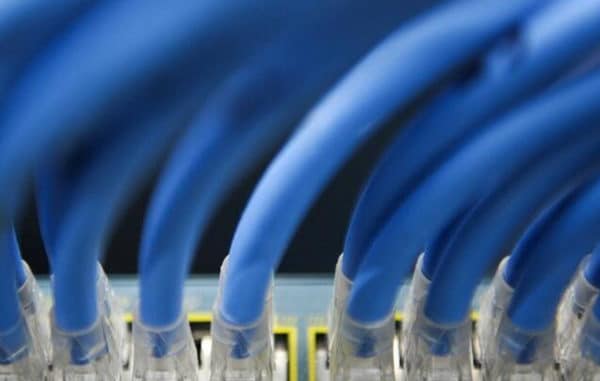
Wi-Fi 6 (802.11ax) is coming, more and more wireless vendors are starting to introduce consumer routers, enterprise-class access points (APs) that support Wi-Fi 6, and even Samsung has already shown support for Wi-Fi 6 mobile phone Galaxy S10 series. However, with the acceleration of Wi-Fi 6 terminals, basic network devices such as traditional switches that are quietly cultivated in enterprise networks have become a bottleneck restricting Wi-Fi 6 and must be upgraded.
The underlying device has to keep up
The deployment of Wi-Fi 6 has become a trend, but enterprises should also have strong underlying wired network facilities to provide support when upgrading wireless APs.
Therefore, the upgrade of the underlying network device for Wi-Fi6 needs to be kept up. The reason is that although the high-performance AP is very important, if there is no underlying network that meets the requirements, the full value of the AP cannot be realized. Therefore, the underlying network devices need to provide fast enough speeds: from APs, uplinks to aggregation and core switches, to clouds or data centers.
Multi-Gigabit switch to match
Starting with the user equipment, the first step in the wired network is the connection from the AP to the switch. In the past 5 to 10 years, most enterprise switches have 1 Gbps Gigabit access ports to support Wi-Fi 4 (802.11n) and below. At that time, the Wi-Fi 4 AP is generally below 450 Mbps, so it can be connected to the switch’s 1 Gbps port.
But in the Wi-Fi 6 era, its throughput is even four times higher than Wi-Fi 5. In the test, the throughput of Wi-Fi 5 Wave 2 AP was 1.5 Gbps per second, and the traditional 1 Gbps port became a bottleneck. At this time, it is necessary to have a multi-gigabit (2.5Gbps/5Gbps/10Gbps) switch device to provide port support for the Wi-Fi 6 AP.
The tens of billions of dollars market are beckoning
According to IDC statistics, the annual revenue of Ethernet switches in the year of 2018 reached US$28.1 billion, an increase of 9.1% year-on-year. Among them, 10 Gigabit Ethernet switches account for 30.6% of the total revenue in 2018. However, given the price pressure brought by the current 10 Gigabit ports, multi-gigabit switches naturally become a good choice for enterprise network smooth upgrade.
To take advantage of the speed offered by Wi-Fi 6 APs (up to 5Gbps per second), organizations should be ready to transition to multi-gigabit switches. Since the average life of switches is 5-7 years, and the average life expectancy of switches in many educational institutions is up to 10 years, enterprises will definitely need more than 1-gigabit connection service during this time.
Let’s review the four major advantages of Wi-Fi 6:
1. Upgrade brings complete MU-MIMO
Multi-user MIMO (MU-MIMO) has been enhanced in Wi-Fi 6. Because Wi-Fi 5 (802.11ac) only uses downlink MU-MIMO, Wi-Fi 6 also has uplink MU-MIMO characteristics, enabling parallel multi-terminal transmission in a complete sense. Therefore, the Wi-Fi 6 AP supporting the 8×8 architecture can interact with 8 clients at a time.
2. Upgrade introduces OFDMA technology
The OFDMA technology adopted by 4G LTE is introduced in Wi-Fi 6. This technology allows the AP to divide a channel into blocks for simultaneous use, allowing data to be transmitted in parallel to multiple terminals. Once the OFDMA technology is deployed, more than 30 terminals can receive data at the same time and then transmit the data back to the network.
3. High-order modulation and coding speed
Wi-Fi 6 uses a higher order modulation coding scheme, 1024QAM, to support more data per OFDM identifier. After the algorithm is tuned, the transmission rate in a multi-user concurrent scenario can be increased by about 4 times.
4. BSS coloring mechanism innovation
Wi-Fi 6 also supports the BSS coloring mechanism. Since the number of channels that the wireless AP can operate is limited, mutual interference cannot be avoided when multiple APs are located close to each other and on the same channel. However, the BSS coloring mechanism allows the network to assign a “color” flag to the channel and reduce the interference threshold.
Conclusion
In the 20 years of rapid development of the Wi-Fi industry, it has created an economic value of 2 trillion US dollars. With the opening of the Wi-Fi 6 era, it is obviously impossible to guarantee a high-quality user experience by simply replacing a part of the wireless AP. At this time, the importance of the underlying network, such as the switch, is highlighted, which is the key to fulfilling the promise of Wi-Fi 6 performance.
Original Article Source http://net.zol.com.cn/712/7122630.html